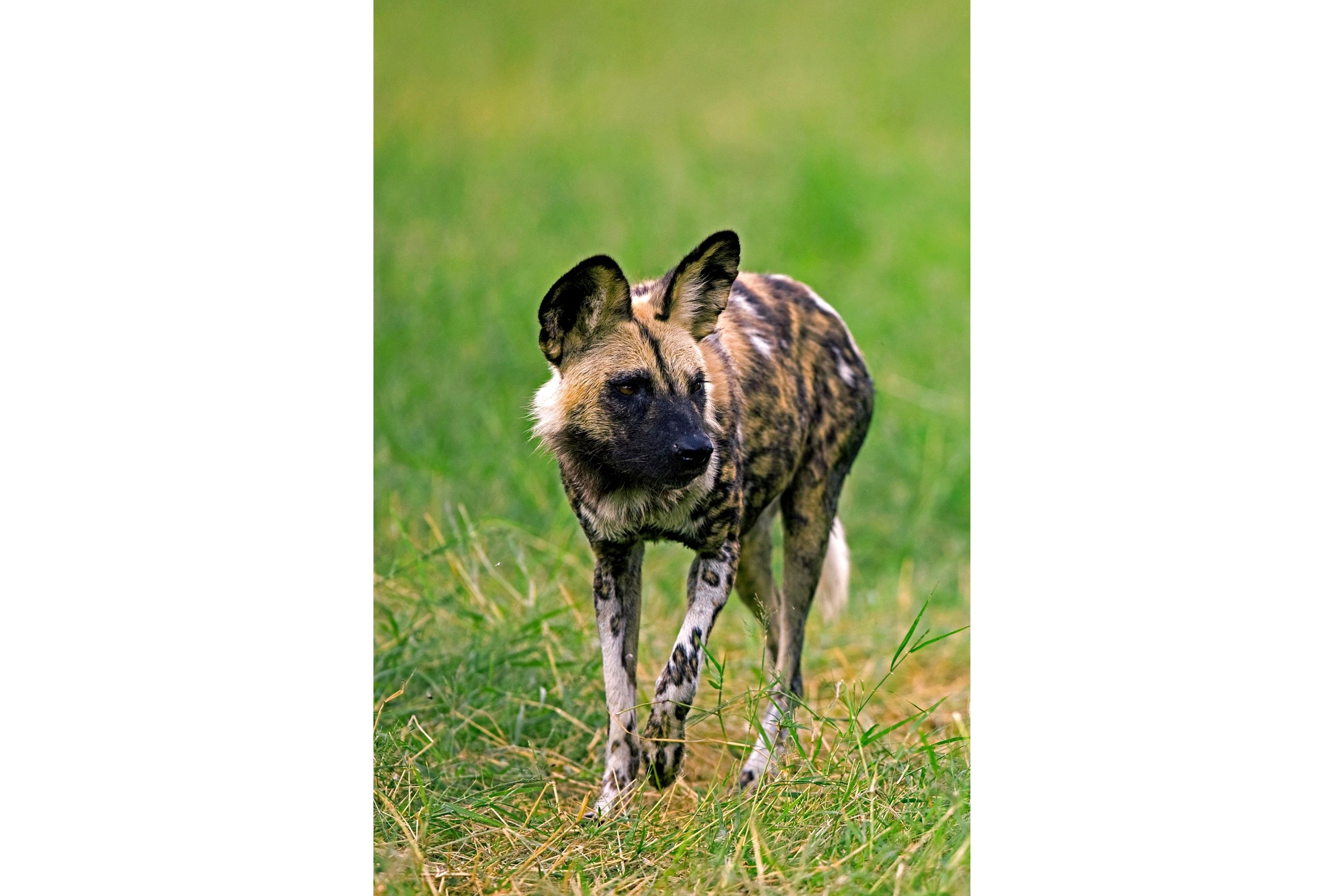African wild dog
(Lycaon pictus)

Description
The African wild dog (Lycaon pictus) also called the African painted dog and the African hunting dog, is a wild canine which is a native species to sub-Saharan Africa. It is the largest wild canine in Africa, and the only extant member of the genus Lycaon, which is distinguished from Canis by dentition highly specialised for a hypercarnivorous diet, and by a lack of dewclaws. It is estimated that about 6,600 adults (including 1,400 mature individuals) live in 39 subpopulations that are all threatened by habitat fragmentation, human persecution, and outbreaks of disease. As the largest subpopulation probably comprises fewer than 250 individuals, the African wild dog has been listed as endangered on the IUCN Red List since 1990. The African wild dog is the bulkiest and most solidly built of African canids. The species stands 60 to 75 cm (24 to 30 in) in shoulder height, measures 71 to 112 cm (28 to 44 in) in head-and-body length and has a tail length of 29 to 41 cm (11 to 16 in). Body weight of adults range from 18 to 36 kg (40 to 79 lb). On average, dogs from East Africa weigh around 20–25 kg (44–55 lb) while in southern Africa, males reportedly weighed a mean of 32.7 kg (72 lb) and females a mean of 24.5 kg (54 lb). By body mass, they are only outsized amongst other extant canids by the grey wolf species complex. Females are generally 3–7% smaller than males. Compared to members of the genus Canis, the African wild dog is comparatively lean and tall, with outsized ears and lacking dewclaws. The middle two toepads are usually fused. Its dentition also differs from that of Canis by the degeneration of the last lower molar, the narrowness of the canines and proportionately large premolars, which are the largest relative to body size of any carnivore other than hyenas. African wild dogs once ranged across much of sub-Saharan Africa, being absent only in the driest desert regions and lowland forests. The species has been largely exterminated in North and West Africa, and has been greatly reduced in number in Central Africa and northeast Africa. The majority of the species' population now occurs in Southern Africa and southern East Africa; more specifically in countries such as Botswana, Namibia, and Zimbabwe. However, it is hard to track where they are and how many there are because of the loss of habitat.
Taxonomic tree:







